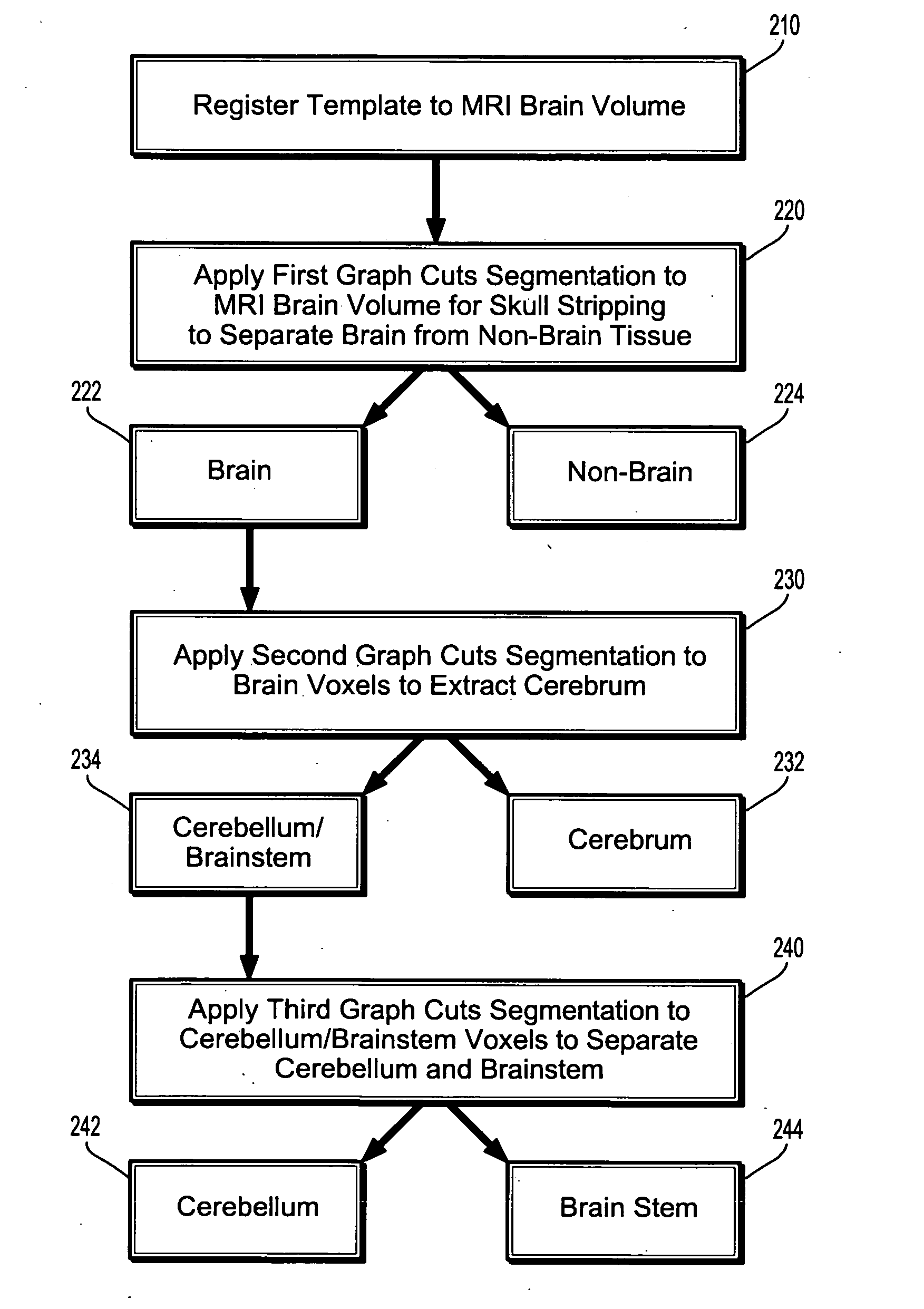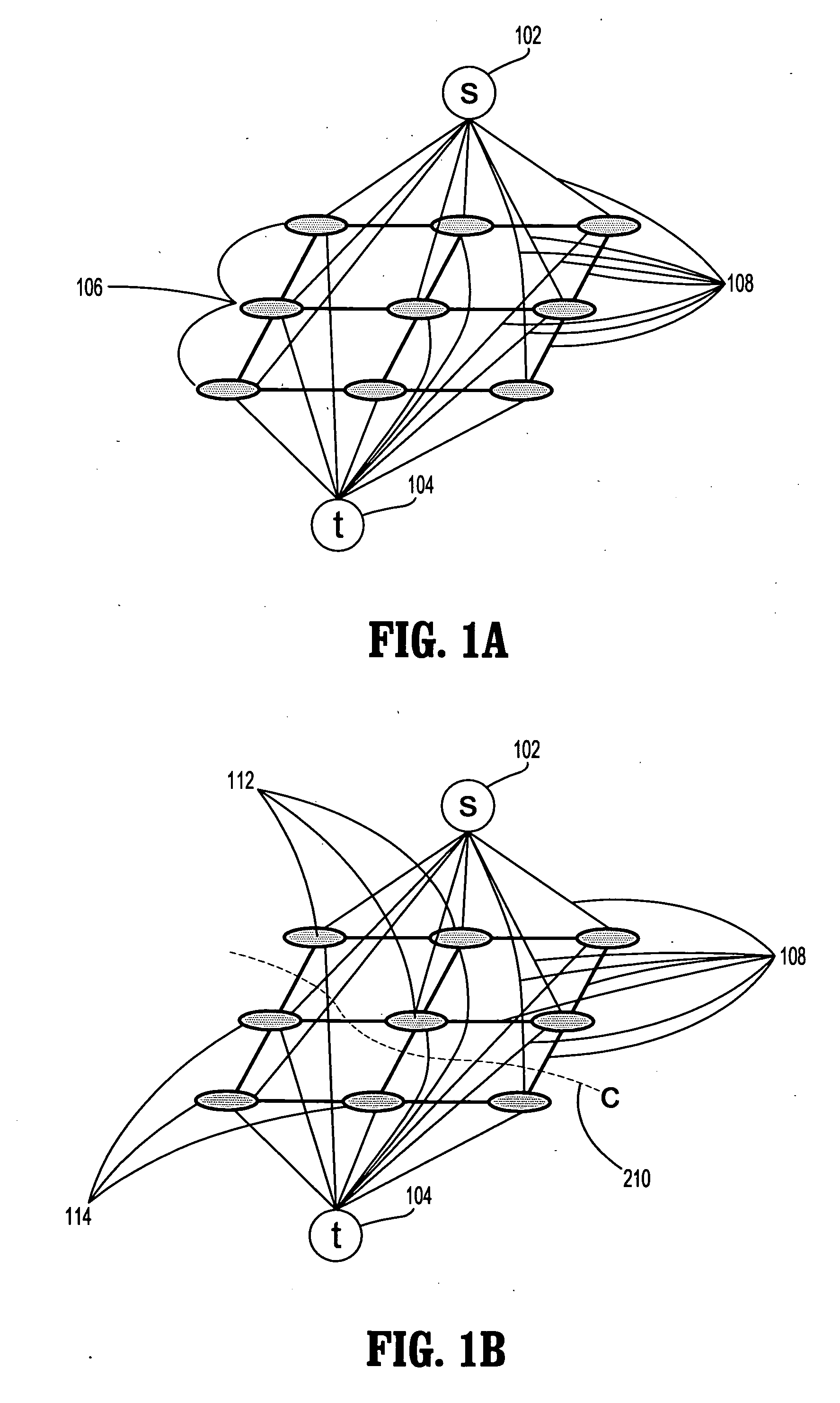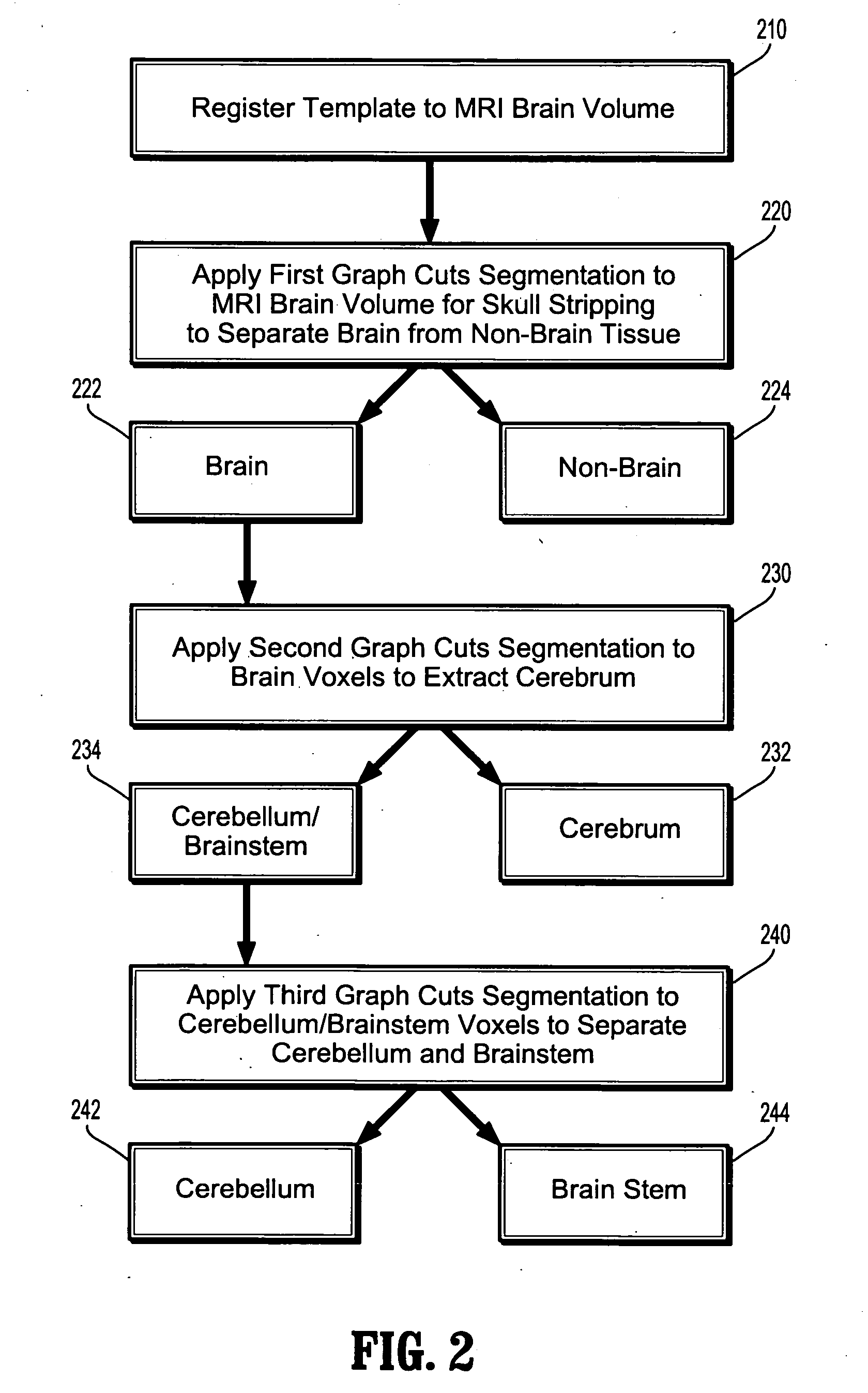System and Method For Segmentation of Anatomical Structures In MRI Volumes Using Graph Cuts
a technology of graph cuts and anatomical structures, applied in the field of 3d segmentation of anatomical structures of the brain in mri volumes, can solve the problems of poor contrast, inability to reliably segment image segmentation methods such as active contours or region growth, and difficulty in segmentation of anatomical structures of the brain
- Summary
- Abstract
- Description
- Claims
- Application Information
AI Technical Summary
Benefits of technology
Problems solved by technology
Method used
Image
Examples
Embodiment Construction
[0017] According to an embodiment of the present invention, anatomical structures are segmented in MRI volume data using graph cuts based on an anatomical template. As described herein, the method is implemented to segment anatomical brain structures in MRI brain volumes, however, the present invention is not limited thereto, and may be applied to other types of anatomical structures in various regions of the body as well.
[0018] Before discussing specific aspects of the graph cut segmentation algorithm using an anatomical template, graph cut theory will be discussed. In particular, an undirected graph G=V,E consists of vertices V and undirected edges E that connect the vertices. Each edge eεE is assigned a non-negative cost ωc. There are two special vertices (referred to herein as “terminals”) in the graph that are identified as the source s and the sink t. With the exception of the terminals s and t, the vertices are comprised of pixels P of an image to be segmented. The image to ...
PUM
 Login to View More
Login to View More Abstract
Description
Claims
Application Information
 Login to View More
Login to View More - R&D
- Intellectual Property
- Life Sciences
- Materials
- Tech Scout
- Unparalleled Data Quality
- Higher Quality Content
- 60% Fewer Hallucinations
Browse by: Latest US Patents, China's latest patents, Technical Efficacy Thesaurus, Application Domain, Technology Topic, Popular Technical Reports.
© 2025 PatSnap. All rights reserved.Legal|Privacy policy|Modern Slavery Act Transparency Statement|Sitemap|About US| Contact US: help@patsnap.com



